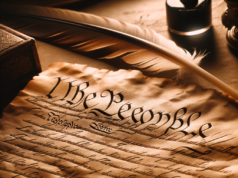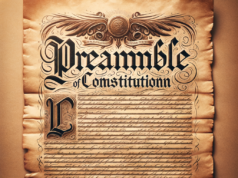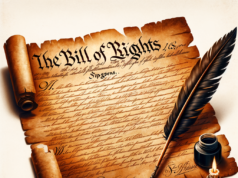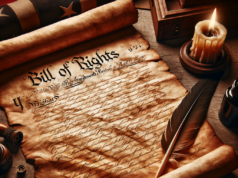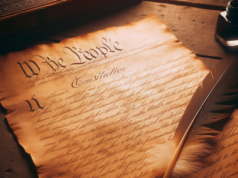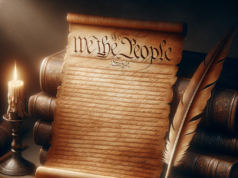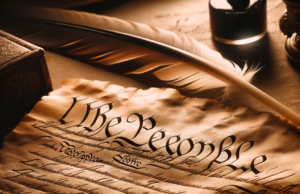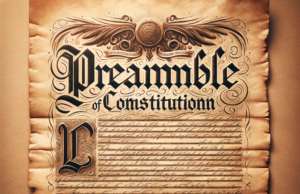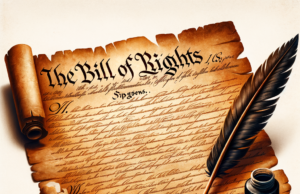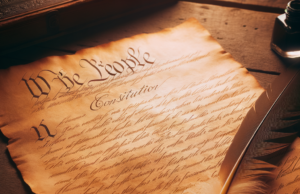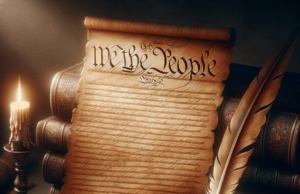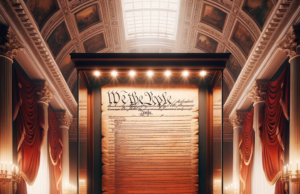Table of Contents
- 1 Understanding the Historical Context of Amendment Conflicts in Modern Governance
- 2 Key Players and Stakeholders in the Debate Over Constitutional Amendments
- 3 The Impact of Public Opinion on Amendment Proposals and Revisions
- 4 Analyzing Case Studies: Notable Amendment Conflicts Throughout History
- 5 Legal Frameworks: How Courts Interpret and Resolve Amendment Disputes
- 6 Future Implications: Navigating the Path Forward for Amendment Reform Efforts

The ongoing debates surrounding constitutional amendments have become a focal point of political discourse, revealing deep-seated divisions within society. As various stakeholders vie for influence, the complexities of amendment conflicts have come to the forefront. This article seeks to unravel the turmoil surrounding these conflicts by exploring their historical context, key players, public opinion, notable case studies, legal frameworks, and future implications for amendment reform efforts.
Understanding the Historical Context of Amendment Conflicts in Modern Governance
The history of constitutional amendments is fraught with conflict, reflecting the evolving nature of governance and societal values. In the United States, for instance, the Constitution has been amended 27 times since its ratification in 1788, with each amendment representing a response to pressing social, political, or economic issues of its time. The Bill of Rights, adopted in 1791, was a direct response to the concerns of Anti-Federalists who feared the potential for government overreach. As society has evolved, so too have the debates surrounding amendments, often highlighting the tension between progressive reforms and traditional values. Understanding this historical context is crucial for comprehending the current landscape of amendment conflicts, as it provides insight into the motivations behind various proposals and the resistance they face.
Key Players and Stakeholders in the Debate Over Constitutional Amendments
The debate over constitutional amendments involves a diverse array of key players and stakeholders, each with their own agendas and perspectives. Politicians, advocacy groups, legal scholars, and the general public all play significant roles in shaping the discourse surrounding amendments. Political parties often align themselves with specific amendment proposals that reflect their ideological beliefs, while advocacy groups mobilize grassroots support to influence lawmakers. Legal scholars contribute to the debate by analyzing the implications of proposed amendments and their potential impact on existing laws and rights. Additionally, public opinion serves as a powerful force, as elected officials often gauge the sentiments of their constituents when considering amendment proposals. This complex interplay of interests creates a dynamic environment where conflicts can arise, as differing priorities and values clash.
The Impact of Public Opinion on Amendment Proposals and Revisions
Public opinion is a critical factor in the success or failure of constitutional amendment proposals. Historically, amendments that align with prevailing public sentiment have a higher likelihood of being ratified, while those that do not often face significant hurdles. For instance, the Equal Rights Amendment (ERA), which aimed to guarantee equal legal rights for all American citizens regardless of sex, garnered widespread support in the 1970s but ultimately fell short of ratification due to shifting public attitudes in subsequent decades. Polling data and public discourse can significantly influence lawmakers’ decisions, as elected officials are acutely aware of the potential political ramifications of supporting or opposing amendment proposals. As a result, understanding the nuances of public opinion is essential for stakeholders seeking to advance their amendment agendas.
Analyzing Case Studies: Notable Amendment Conflicts Throughout History
Throughout history, several notable amendment conflicts have highlighted the contentious nature of constitutional reform. One prominent example is the conflict surrounding the 18th Amendment, which established Prohibition in 1920. Initially supported by a significant portion of the population, the amendment led to widespread illegal activity and ultimately resulted in its repeal by the 21st Amendment in 1933. Another significant case is the ongoing debate over the Second Amendment and gun control, which has polarized public opinion and led to numerous legal challenges and legislative proposals. These case studies illustrate how amendment conflicts can arise from deeply held beliefs and societal changes, often resulting in prolonged debates that reflect the complexities of governance and the evolving nature of rights and liberties.
Legal Frameworks: How Courts Interpret and Resolve Amendment Disputes
The judiciary plays a crucial role in interpreting and resolving disputes related to constitutional amendments. Courts are tasked with determining the constitutionality of proposed amendments and the legality of their implementation. Landmark Supreme Court cases, such as Bush v. Gore and United States v. Nixon, have underscored the judiciary’s power to influence the amendment process and shape the interpretation of constitutional provisions. Additionally, lower courts often grapple with cases involving the application of amendments, leading to varied interpretations that can further complicate the amendment landscape. As legal precedents are established, they can either reinforce or challenge existing amendment proposals, highlighting the importance of judicial review in the broader context of constitutional governance.
As society continues to evolve, the need for constitutional amendments that reflect contemporary values and address emerging challenges remains pressing. The path forward for amendment reform efforts will likely require a concerted effort from diverse stakeholders to bridge ideological divides and foster constructive dialogue. Engaging the public through education and awareness campaigns can help demystify the amendment process and encourage civic participation. Additionally, exploring alternative mechanisms for reform, such as state-level initiatives or constitutional conventions, may provide new avenues for addressing pressing issues. Ultimately, navigating the complexities of amendment conflicts will necessitate a commitment to compromise, collaboration, and a shared vision for a more equitable and just society.
The turmoil surrounding amendment conflicts is emblematic of the broader struggles within modern governance, reflecting the challenges of balancing tradition with progress. As stakeholders continue to engage in debates over constitutional reform, understanding the historical context, key players, public opinion, notable case studies, legal frameworks, and future implications will be essential for fostering a more informed and constructive dialogue. By addressing these conflicts with a commitment to inclusivity and collaboration, society can work towards a constitutional framework that better serves the needs and aspirations of all its citizens.



